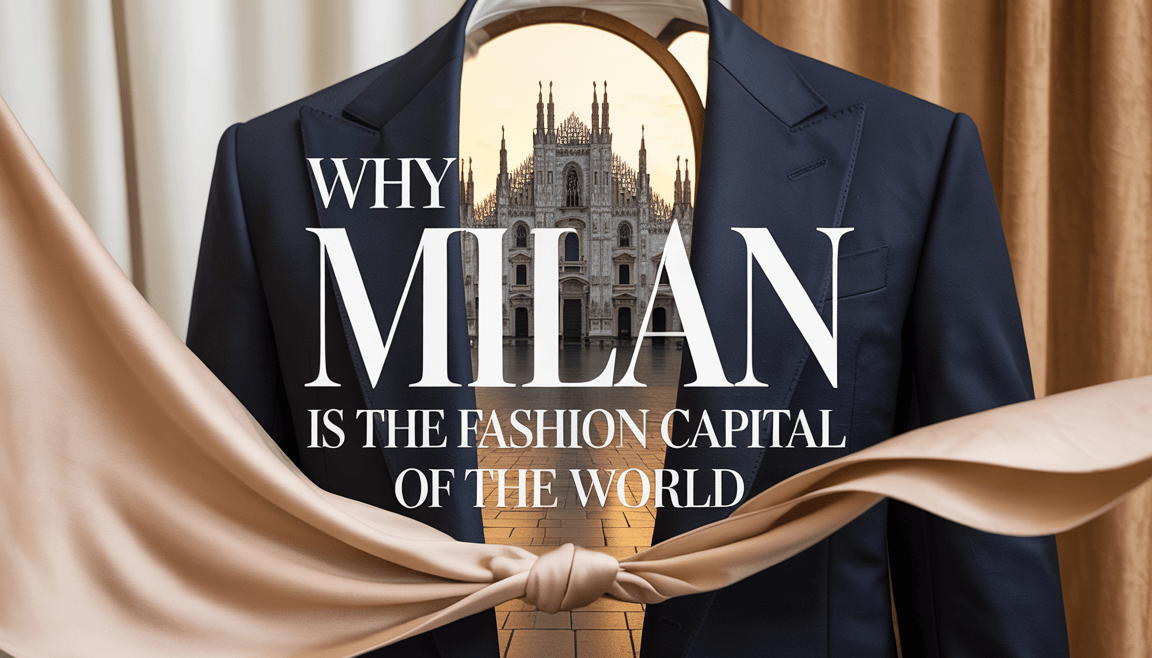Have you ever noticed how Milanese professionals seem to carry themselves differently? There’s an unmistakable confidence in their stride, a certain assurance in their presence that goes beyond mere clothing. This isn’t coincidence—it’s the psychological power of Italian elegance at work.
Milan isn’t just Italy’s fashion capital; it’s a living laboratory for understanding how clothing impacts our psychology, social standing, and professional success. Whilst other cities view fashion as optional self-expression, Milan recognises style as essential social intelligence. Understanding why requires delving into the fascinating intersection of neuroscience, cultural anthropology, and behavioural psychology.
In this article, you’ll discover:
-
- Why Milan earned its status amongst the world’s Big Four fashion capitals
- The neuroscience behind Italian elegance and confidence
- How la bella figura shapes every social interaction in Italy
- Practical tips for looking stylish in Milan
- Why working with a personal stylist accelerates your cultural fluency
Why Is Milan Called the Fashion Capital of the World?
Milan earned its position amongst the Big Four fashion capitals—alongside Paris, London, and New York—through a unique combination of historical craftsmanship, industrial innovation, and cultural reverence for aesthetic excellence.
Unlike Paris’s haute couture heritage or New York’s commercial pragmatism, Milan represents the perfect marriage of artisanal tradition and modern luxury business. The city houses the headquarters of Prada, Armani, Versace, Dolce & Gabbana, and Valentino—but Milan’s importance transcends corporate presence.
What makes Milan truly special? It’s the psychological ecosystem surrounding fashion that sets this city apart. Here, style isn’t compartmentalised into an industry—it permeates business culture, social interactions, and daily life in ways other fashion capitals simply don’t replicate.
Milan’s position was solidified during the post-war economic boom when Italian manufacturers combined superior craftsmanship with innovative production techniques, creating the “Made in Italy” luxury brand that still commands premium prices globally. The city’s fashion weeks draw international buyers, press, and influencers twice annually, generating billions in economic impact whilst reinforcing Milan’s cultural authority.
But the real answer lies deeper: Milan matters because Italians have embedded fashion into their cultural identity in ways that make aesthetic excellence a social expectation rather than personal choice.
The Neuroscience Behind Milan’s First Impressions
Your brain makes snap judgements about competence, trustworthiness, and social status within seven seconds of meeting someone. In Milan, this neurological reality is amplified by cultural expectations.
Research in cognitive psychology reveals that visual processing dominates our initial assessments—and Milanese culture has evolved to leverage this biological truth.
When you encounter someone impeccably dressed in Milan, your brain’s fusiform gyrus immediately processes visual status signals: fabric quality, fit precision, colour sophistication, accessory choices. These signals trigger neural pathways associated with competence and reliability before a single word is exchanged.
Here’s where it becomes genuinely fascinating: Studies on “enclothed cognition” demonstrate that clothing doesn’t just change how others perceive you—it fundamentally alters your cognitive performance. Researchers found that participants wearing formal business attire showed enhanced abstract thinking and improved negotiation outcomes compared to those in casual clothing.
The physical experience of wearing quality, well-fitted garments activates psychological states of authority and capability. In Milan’s competitive business landscape, this isn’t vanity—it’s neurological strategy.
“When you dress with Italian sophistication, you’re not merely following fashion rules; you’re optimising your brain chemistry for professional success.”
Why Are Italians So Stylish? Understanding La Bella Figura
Why is fashion so important to Italian culture? The answer lies in la bella figura—perhaps Italy’s most important untranslatable concept.
What Is La Bella Figura?
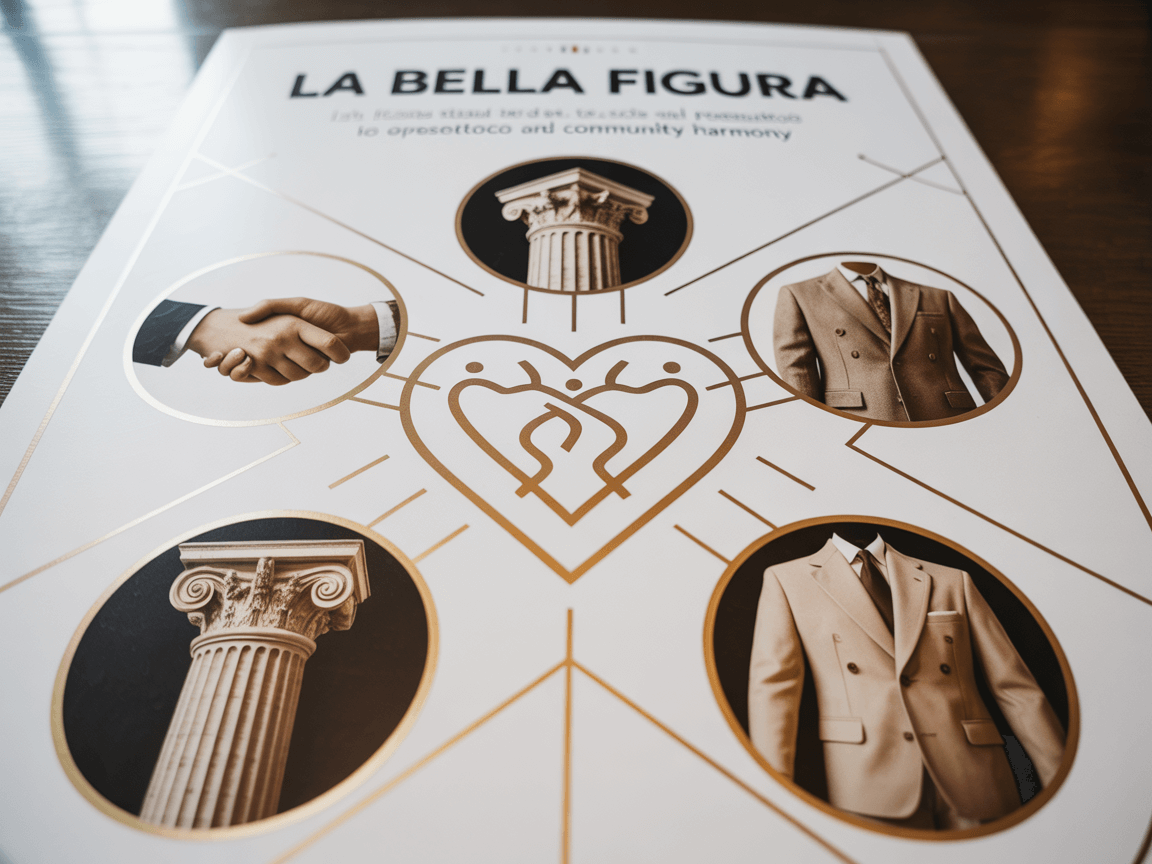
La bella figura (literally “beautiful figure”) represents the cultural belief that how you present yourself directly impacts everyone around you. It’s a Renaissance-born philosophy where aesthetic excellence demonstrates respect, cultural sophistication, and social responsibility.
This isn’t superficial vanity. Poor presentation in Italian culture isn’t merely a personal failing—it’s considered disrespectful to your community. Conversely, dressing well demonstrates that you value others enough to make the effort.
Italian city-states during the Renaissance developed elaborate social codes around presentation and comportment, where visual excellence in art, architecture, and personal appearance became expressions of civic pride. This historical foundation explains why Italians maintain such consistently high standards today.
What defines Italian elegance? It’s this seamless integration of aesthetic excellence with social consciousness. Italian elegance isn’t about standing out through ostentation—it’s about demonstrating respect, cultural fluency, and attention to detail that elevates everyone’s experience.
The psychological weight of fare una brutta figura (making a bad impression) motivates Milanese to maintain these standards—not from insecurity, but from cultural duty. Understanding this principle is crucial for anyone working or living in Milan.
Ready to Master Milanese Elegance?
Working with a personal stylist in Milano helps you navigate these unspoken cultural codes with confidence. Deni Kiro’s Fashion Getaway experience provides the cultural fluency and practical guidance you need to look effortlessly sophisticated in Italy’s fashion capital.
Why Is Luxury Fashion Important? The Economic Psychology of Investment Dressing
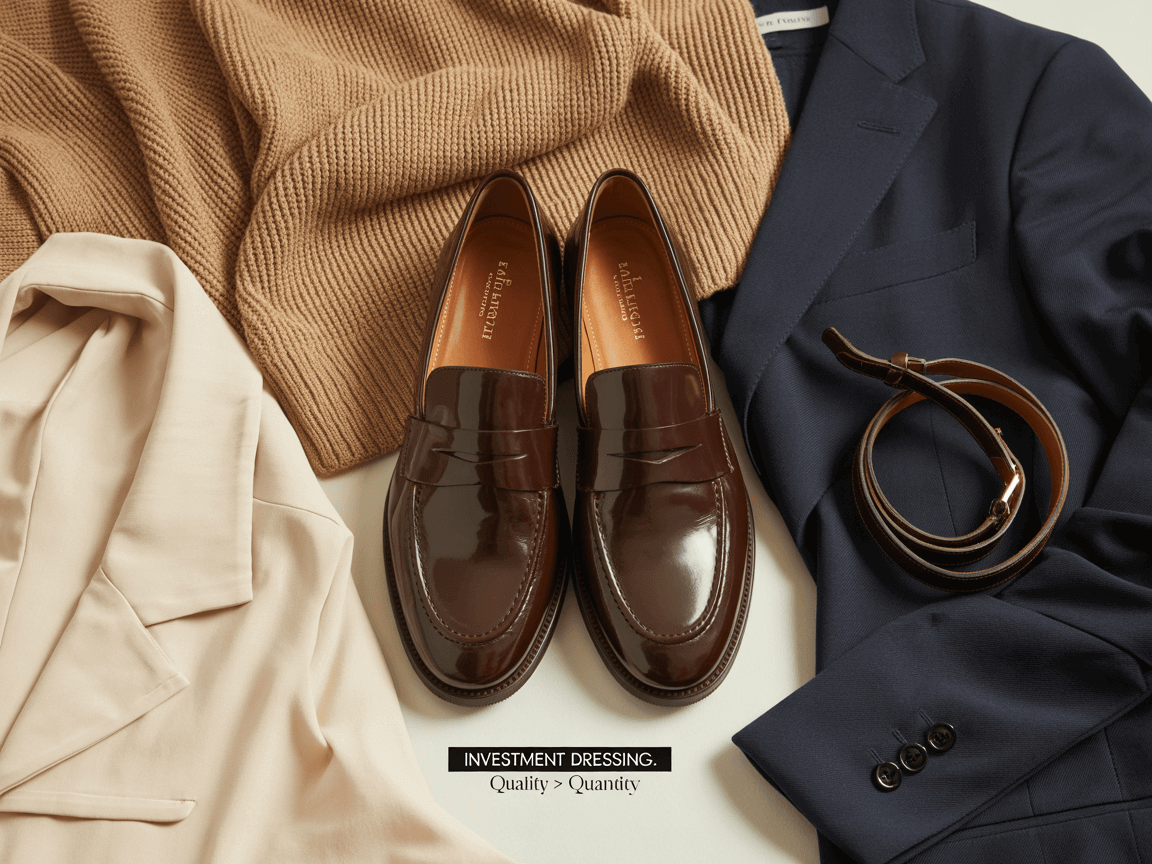
Why do Milanese consistently choose an €800 pair of shoes over eight €100 pairs? The answer lies in sophisticated economic psychology that challenges fast-fashion mentality.
Behavioural economics research reveals that luxury purchases trigger different neural pathways than commodity purchases. When you invest in quality Italian leather goods, your brain’s reward system activates in response to perceived permanent value rather than temporary gratification.
This creates what psychologists call the “endowment effect”—quality items increase in subjective value the longer you own them. Your €800 shoes become more precious over time, whilst disposable purchases lose value immediately after purchase.
The Psychology of Quality Over Quantity
Milan’s fashion culture operates on this principle instinctively. The psychology of “investment dressing” fundamentally changes your relationship with clothing:
- Reduced decision fatigue: Fewer, better pieces eliminate daily wardrobe stress
- Increased satisfaction: Quality purchases provide lasting pleasure
- Enhanced confidence: Knowing you’re wearing exceptional items affects posture and presence
- Sustainable mindset: Long-term thinking replaces disposable consumption
Studies show that individuals who invest in fewer, higher-quality items experience reduced decision fatigue and increased satisfaction with their choices. The Milanese capsule wardrobe approach—built on exceptional foundations rather than endless options—creates cognitive ease that fast-fashion abundance paradoxically destroys.
Luxury fashion matters in Milan because it represents a psychological commitment to excellence, sustainability, and cultural values that extend far beyond clothing.
This explains why strategic guidance from an experienced personal shopper in Milan delivers genuine psychological ROI. Learning to assess quality, understand craftsmanship, and make investment decisions transforms shopping from stressful consumption into confident curation.
How Clothing Transforms Body Language and Confidence
Something remarkable happens when you wear exceptionally well-fitted, quality clothing: your body language fundamentally changes. This isn’t a psychological placebo—it’s a measurable physiological response.
Research in embodied cognition demonstrates that clothing directly influences posture, gesture, and movement patterns. Italian tailoring, with its emphasis on perfect fit and luxurious fabrics, creates tactile feedback that your nervous system interprets as status and capability.
Your shoulders naturally pull back, your chin lifts slightly, and your stride becomes more purposeful. These aren’t conscious adjustments—they’re automatic responses to wearing clothes that feel exceptional.
The Tactile Psychology of Luxury
When you wear cashmere against your skin or carry butter-soft Italian leather, your somatosensory cortex registers these sensations continuously throughout your day. This constant sensory reminder of quality maintains elevated confidence levels that rougher, synthetic fabrics simply cannot provide.
Hormonal responses also shift. Studies measuring cortisol (stress hormone) and testosterone (confidence hormone) levels show that individuals wearing formal, well-fitted attire experience:
- Reduced stress responses in challenging situations
- Enhanced assertiveness during negotiations
- Improved self-perception and confidence
- Better emotional regulation under pressure
This biological reality makes professional styling in Milan less about aesthetics and more about psychological performance optimisation. Watch how Milanese move through their city—there’s an embodied elegance that comes from wearing clothes that feel as exceptional as they look.
Which City Has the Best Dressed People? Social Identity and
Milan’s Style Consensus
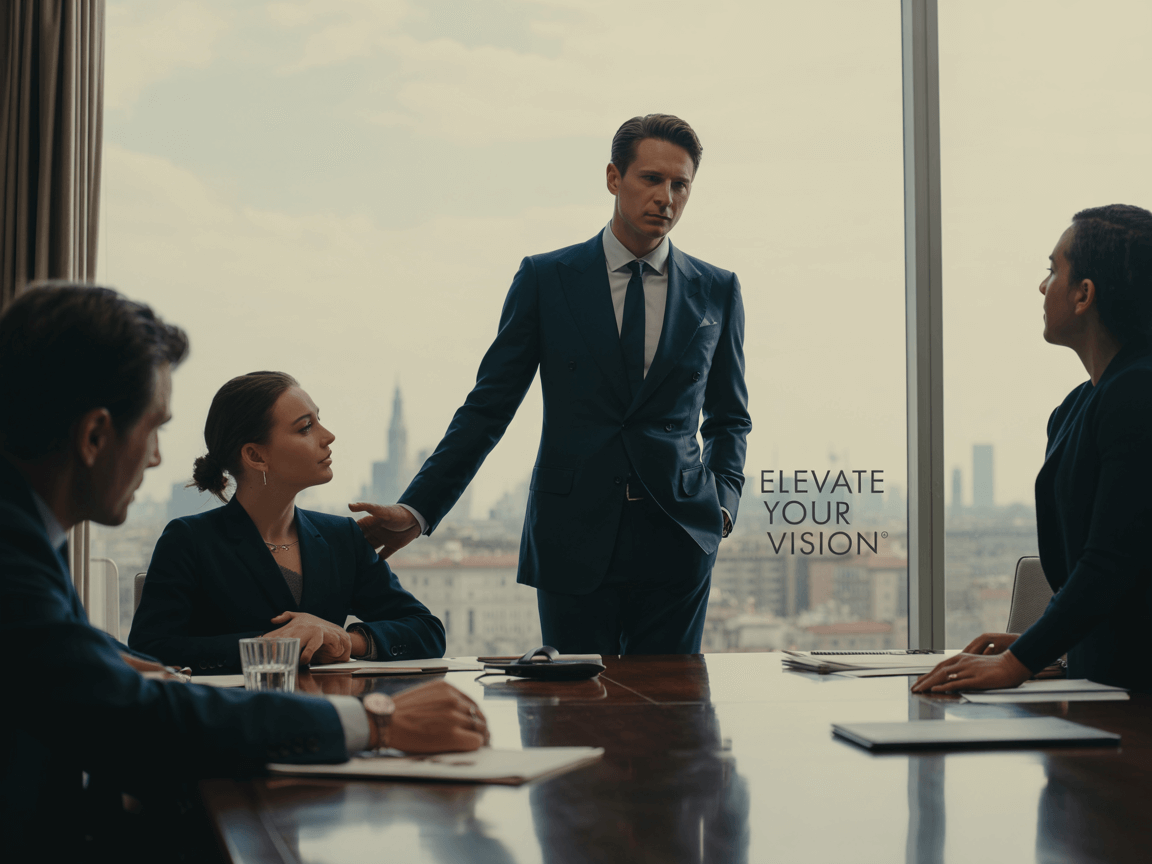
Debates about “which city has the best dressed people” miss the deeper psychological point:
Milan’s population demonstrates the most consistent cultural agreement about what constitutes appropriate elegance. This consensus creates powerful social dynamics rooted in social identity theory. Humans are fundamentally tribal creatures. We define ourselves partly through group membership—and in Milan, aesthetic sophistication serves as the primary tribal marker.
The Halo Effect in Milanese Business Culture
In-group recognition through style codes allows Milanese professionals to identify cultural fluency instantly. When you demonstrate understanding of appropriate fabric weights, seasonal colour palettes, and silhouette sophistication, you signal: “I belong here, I understand the rules, I respect this culture.”
Research on the “halo effect” demonstrates that individuals perceived as stylish receive disproportionate positive assessments of competence, intelligence, and leadership capability. In Milan’s fashion-conscious business environment, this halo effect operates at maximum intensity.
However, there’s a crucial nuance here: Milan doesn’t reward fashion-forward risk-taking—it celebrates refined sophistication within established parameters. You must demonstrate enough aesthetic intelligence to earn in-group status, but not so much individual flair that you appear to be showing off or breaking tribal codes.
Navigating these unspoken boundaries requires cultural expertise. As explored in our London vs Milan style comparison, what works brilliantly in other international cities can actively harm your credibility in Milan.
How to Look Stylish in Italy: 5 Essential Rules
Understanding the psychology is valuable, but what about practical application? Here’s how to look stylish in Milan without looking like a tourist:
1. Prioritise Perfect Fit Over Brand Names
Milanese can spot ill-fitting clothing instantly. A well-tailored mid-range blazer outranks a designer piece that doesn’t fit properly. Invest in alterations—Italian tailors are artists who can transform off-the-rack pieces into bespoke-looking garments.
Key areas for tailoring:
- Jacket shoulders and sleeve length
- Trouser hem and waist
- Shirt collar and cuffs
- Coat sleeves and overall length
2. Build a Neutral Foundation with Strategic Colour Accents
Milan’s signature palette revolves around sophisticated neutrals—navy, charcoal, camel, cream, chocolate brown—punctuated by rich jewel tones or seasonal colours.
Avoid:
- Head-to-toe bright colours
- Clashing patterns
- Overly trendy colour combinations
- Anything that screams “tourist”
Embrace:
- Monochromatic sophistication
- Tonal layering
- One statement colour per outfit
- Seasonal colour evolution
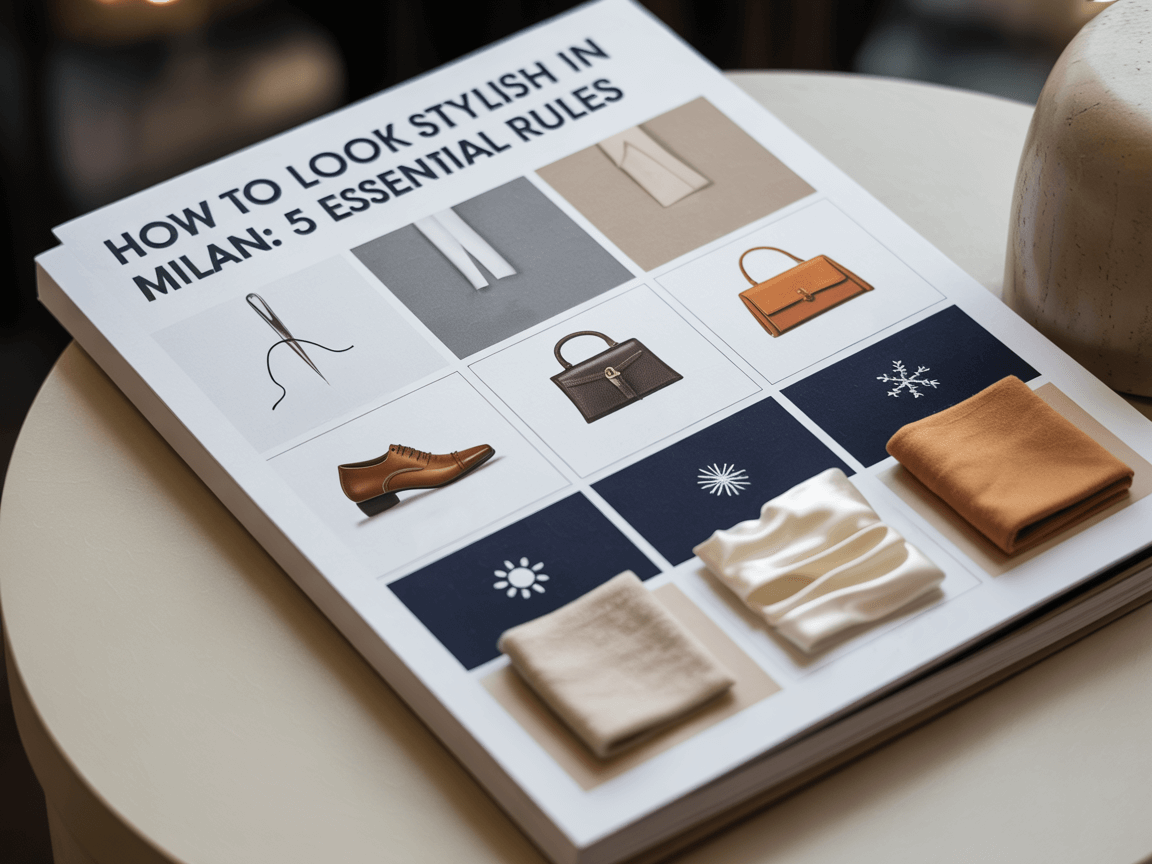
3. Invest Heavily in Shoes and Leather Goods
In Milan, people notice your footwear before almost anything else. Scuffed shoes or cheap leather accessories immediately undermine otherwise excellent outfits.
Priority investments:
- Classic Italian leather shoes (loafers, oxfords, elegant boots)
- Quality handbag in timeless shape
- Leather belt that coordinates with shoes
- Small leather goods (wallet, cardholders)
4. Understand Seasonal Dress Codes
Milan has distinct seasonal expectations that go beyond temperature considerations:
Spring/Summer: Lightweight fabrics, breathable layers, lighter colours whilst maintaining structure
Autumn/Winter: Rich textures, deeper colours, luxurious outerwear, strategic layering
The city’s fashion calendar also influences dress codes—during fashion week (February and September), the style bar rises noticeably across all settings.
5. Quality Fabrics Trump Everything
Milanese can identify fabric quality from across a room. Natural fibres—wool, silk, cashmere, linen, quality cotton—always outperform synthetic alternatives.
Fabric hierarchy in Milan:
- Cashmere and fine merino wool for knitwear
- Silk or high-quality cotton for shirts and blouses
- Structured wool for suiting
- Italian leather for shoes and accessories
- Natural linen for summer elegance
Want personalised guidance on building your Milan wardrobe? Discover how Deni Kiro’s styling services help professionals master Italian elegance whilst maintaining authentic personal style.
What Defines Italian Fashion? The Milan Paradox
Italian fashion simultaneously demands conformity to aesthetic standards whilst celebrating subtle individuality. This apparent contradiction reveals deep psychological wisdom.
Creative constraint theory in psychology demonstrates that boundaries actually enhance creativity rather than limiting it. When you must work within defined parameters—quality fabrics, classic silhouettes, sophisticated colour palettes—you’re forced to express personality through nuanced details rather than dramatic gestures.
The Freedom of Clear Rules
When the fundamental rules are clear, you waste zero mental energy on basic decisions. Should you wear a suit to that meeting? Obviously. Should it be well-tailored? Unquestionably. These decisions are automatic, freeing your cognitive resources for genuinely creative questions: which texture, which shade, which accessory reveals your personality within excellence?
This is sprezzatura—studied nonchalance. The psychological state of appearing effortlessly elegant whilst having made incredibly thoughtful choices.
Achieving this requires understanding Milan’s aesthetic grammar fluently enough that sophistication becomes intuitive rather than laboured. For businesswomen navigating this landscape, the specific considerations for professional success require balancing authority with femininity, power with approachability—all within Milan’s particular cultural framework.
Why Hiring a Personal Stylist in Milano Is Emotional
Intelligence Development
Let’s address this directly: working with a personal stylist in Milan isn’t indulgence—it’s accelerated cultural and emotional intelligence development.
Emotional intelligence includes the capacity to read social contexts, adapt behaviour appropriately, and demonstrate cultural sensitivity. In Milan, where aesthetic codes communicate respect, professionalism, and cultural fluency, style literacy becomes a crucial component of EQ.
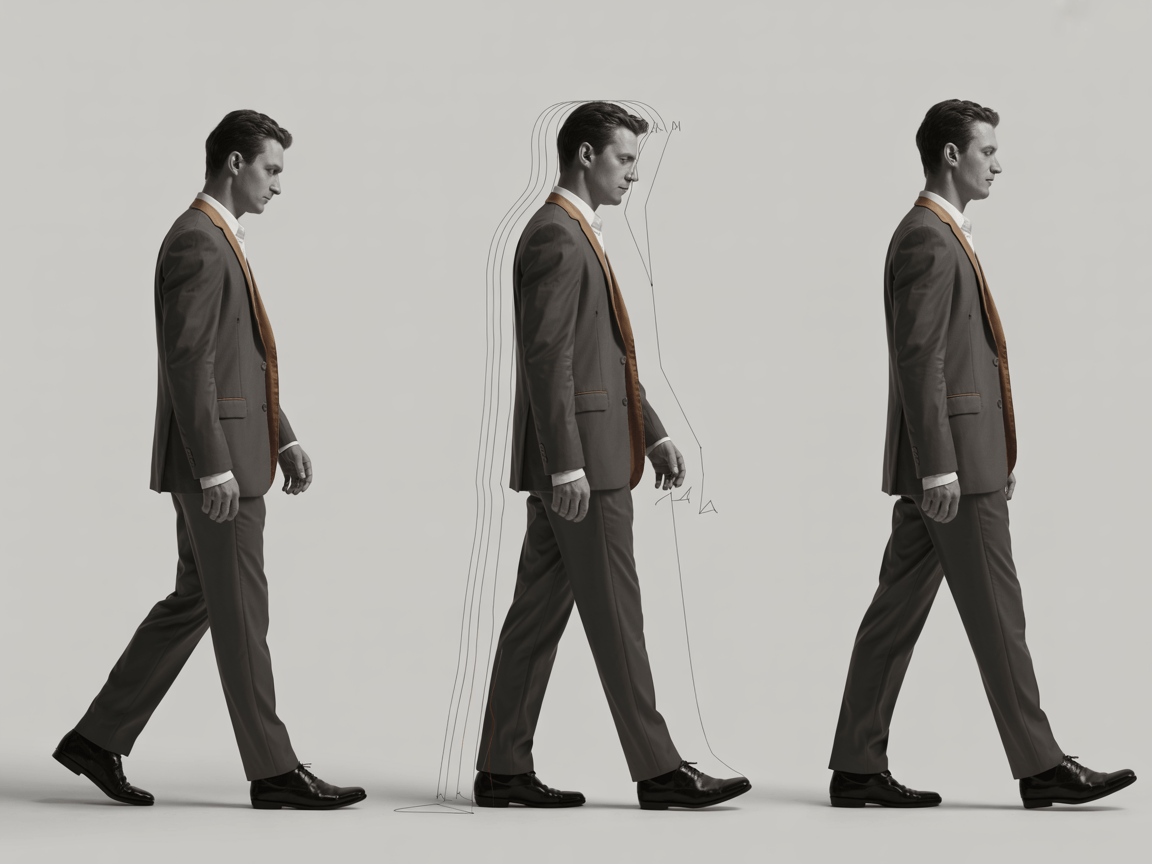
What Expert Styling Provides
Cultural translation: Understanding not just what to wear, but why certain choices communicate specific messages in Milanese context
Social navigation: Reading the unspoken dress codes across business sectors, social situations, and seasonal expectations
Decision-making frameworks: Learning to assess quality, understand craftsmanship, and make investment choices confidently
Identity integration: Maintaining authentic self-expression whilst demonstrating cultural respect and sophistication
This knowledge transfer has lasting psychological impact. Clients report reduced anxiety around professional presentation, increased confidence in social situations, and enhanced ability to focus on substantive matters rather than constant wardrobe uncertainty.
The transformation journey from feeling like a perpetual outsider to moving through Milan with assured sophistication represents genuine psychological growth. When you understand the cultural language of Italian elegance, you’re not just better dressed—you’re more emotionally intelligent and culturally fluent.
The ROI of Psychological Style Investment
The benefits of understanding and embodying Italian elegance extend far beyond Milan itself. The psychological principles—confidence through quality, respect through presentation, identity through thoughtful self-expression—translate across contexts.
Professionals who invest in understanding these principles report:
- Enhanced confidence in high-stakes situations and international settings
- Improved first impressions and accelerated relationship building
- Reduced decision fatigue and increased mental clarity throughout the day
- Greater appreciation for craftsmanship and quality across all life domains
- Elevated personal standards that cascade into professional excellence
Milan serves as the perfect environment for this transformation because the cultural standards are unambiguous. You receive immediate, honest feedback—not through criticism, but through social response.
When you dress with Italian sophistication, doors open, conversations flow more easily, and professional respect arrives automatically. This isn’t superficial—it’s the reality of human psychology operating in a culture that’s been perfecting these social codes for centuries.
Your Milan Transformation Awaits
Understanding the psychology of Italian elegance intellectually differs profoundly from experiencing it practically. Reading about la bella figura cannot replace the confidence surge of moving through Milan in a perfectly tailored blazer, the tactile pleasure of Italian leather against your skin, or the social ease that comes from cultural fluency.
This is where Deni Kiro’s Fashion Getaway: Personal Shopping in Milan transforms theory into tangible transformation.
Why Choose Deni Kiro for Your Milan Style Journey?
With extensive experience living and working in Milan, combined with psychological understanding of style’s deeper impacts, Deni guides you beyond surface aesthetics into genuine Italian elegance. Her approach includes:
Tailored shopping experiences in Milan’s fashion districts—from Quadrilatero della Moda luxury boutiques to hidden artisanal gems
Cultural education that helps you understand not just what to wear, but why it matters in Italian social contexts
Quality assessment training so you can confidently evaluate craftsmanship and make smart investment decisions
Ongoing support as you integrate Italian elegance principles into your permanent wardrobe strategy
Whether you’re preparing for business expansion in Milan, relocating to Italy, or simply wanting to understand why Italian fashion carries such psychological power—professional guidance accelerates your journey from uncertain observer to confident participant.
The investment isn’t merely in clothing—it’s in psychological transformation, cultural intelligence, and lasting confidence that transcends geography.
Take Your First Step Towards Italian Elegance
Ready to discover how Italian elegance can transform not just your wardrobe, but your entire approach to professional presence?
Your psychological style evolution begins with understanding that in Milan, fashion isn’t frivolous—it’s fundamental to how humans build trust, command respect, and navigate sophisticated social landscapes.
Book your Milan fashion consultation today and experience firsthand why style matters profoundly in the world’s most psychologically sophisticated fashion capital.

Contact Deni Kiro Style:
Email: stylist@denikiro.com
Phone: +44 7557 236 616
Explore Related Milan Style Guides:
- What Does a Personal Stylist in Milan Actually Do?
- Dressing for Success in Milan: Businesswomen’s Guide
- London vs Milan Style Comparison
Transform your understanding of style’s psychological power—from the boardrooms of London to the elegant streets of Milan.

